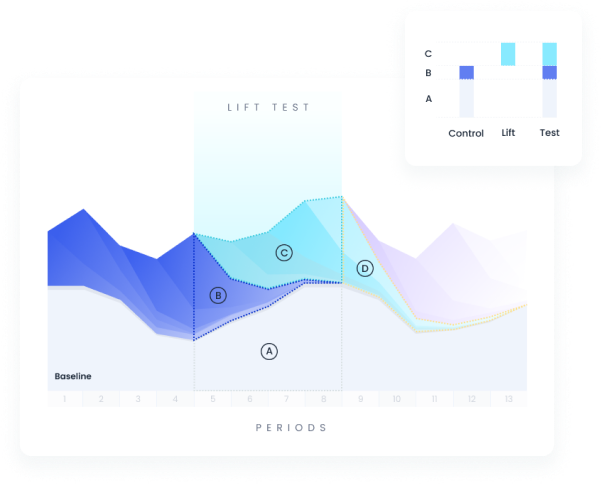
Product
Model
Calibration
A calibration model in Marketing Mix Modeling (MMM) adjusts the initial model to better match real-world data. Calibration improves the accuracy of the model’s predictions by aligning it with observed outcomes. This process ensures that the model’s estimates of each marketing channel’s impact are realistic and reliable, leading to better decision-making and more effective marketing strategies.

GEO lift test
A GEO Lift test is a way to measure the effectiveness of marketing campaigns in different geographical areas. With these tests, you can compare the sales or other relevant metrics in various areas (cities, regions, countries) where you ran the ads versus areas where you didn't. This comparison helps you understand the real impact of your marketing efforts. By understanding which areas respond best to your campaigns, you can optimize your marketing budget and efforts for maximum effectiveness.

Sales lift test
Sales lift shows how much a marketing activity, like an ad campaign, increased sales. By comparing actual sales to expected sales without the campaign, businesses can gauge the effectiveness of their marketing efforts and make better decisions for future campaigns.

Contextual calibrations
Contextual calibration, or point-in-time calibration, more precisely aligns Marketing Mix Modeling (MMM) estimates with experimental results than methods relying on prior assumptions. Techniques based on priors may not accurately capture the immediate impact of current marketing efforts and often blend immediate effects with carryover effects from past advertising, leading to mismatches when calibrating with experimental data. Models can be significantly improved by incorporating multiple experiments on different channels and at different points in time.
